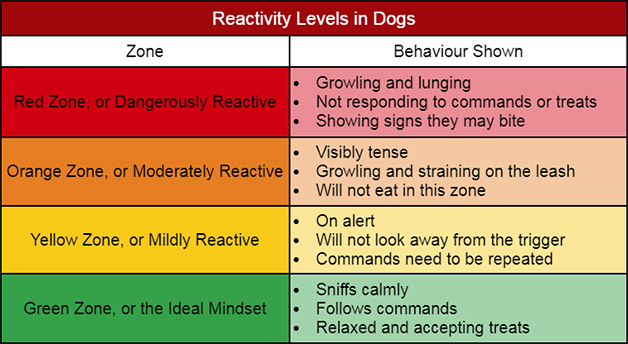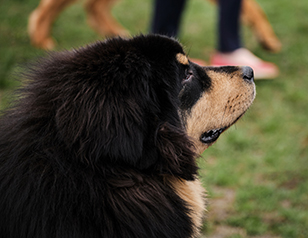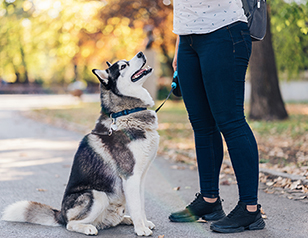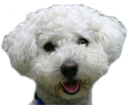7 Useful Ways to Train Your Reactive Dog
A reactive dog tends to overreact to things in its environment by growling, barking, and lunging. However, these reactions may not necessarily mean the dog is aggressive. Reactivity is common in dogs and could be because of an incident in their past, a lack of social experience, or even their genes. If you have a reactive dog, it can be challenging to handle them. Professional dog training can help you develop a loving relationship with them. Read on to learn about the top ways to keep your reactive dog focused and calm.
Reactive Dogs are Uncomfortable
According to expert dog trainers, reactivity in dogs originates from discomfort in most cases. The most common reason for their behaviour is that they are stressed, scared, uncomfortable, or unhappy in their environment. You cannot scold them and hope they behave well. Instead, it is best to remain composed in such situations and do your best to create a calm atmosphere until your dog is more relaxed.

Getting Started with Reactive Dog Training
Set Up a Routine
Dogs like routines as they help them understand everything better and feel more focused, calm, and safe in stressful situations.
Use Essential Equipment
To help reduce reactive tendencies in your dog, you can use different tools and equipment. This will be helpful when you take them for walks and make them understand your cues.
Counter Conditioning
With this dog training technique, you can change your dog’s response to specific incidents, objects, or triggers. It may include reactions to things such as another dog or an animal, humans, cars, and vacuums, among others. It includes identifying the issue, getting them used to the triggers, and rewarding them for every appropriate response.
Household Changes
Making small changes to your home can help reduce your dog’s reactivity and ensure they are more comfortable. Some of the common forms are:
- Window Reactivity – Your dog may think that their growling and barking at the window made the person or animal go away, which is why they feel encouraged to repeat the behaviour. You can use a baby gate, curtains, or blinds to keep them away from windows.
- Backyard Reactivity – This is similar to window reactivity. You can build a fence around your backyard and practice walking your dog on a leash. Having a good recall helps to calm them down if they become riled up.
Body Language
Expert dog trainers know that dogs often speak through body language. Understanding your pup’s body language is an excellent way to communicate effectively with them. This will help you recognize when they are scared, stressed, anxious, uncomfortable, or threatened. In addition to their actions, you need to consider the surroundings to determine how they are feeling. Here are a few things you should keep in mind:
- Happy dogs are wiggly and typically have soft eyes, open mouths, and forward or relaxed ears.
- If your dog is nervous, it may have a tense body posture.
- Alert dogs tend to have a forward body posture, indicating that they are undecided on their reaction. However, they may quickly become playful or aggressive.
- Aggressive dogs will be stiff and tense, often baring their teeth with their hackles raised.
Games for Training a Reactive Dog
Listed below are some effective games taught by dog trainers during their classes that can help manage a pup’s reactiveness:
A Find-It Game
When your dog gets distracted by another dog, animal, or person, you can try the game of “Find-It.” Say, find it and quickly hide some treats nearby. Sniffing helps dogs calm down and gives them something to do besides barking, growling, or lunging. However, this trick may not work if your dog is already too scared.
An Emergency U-Turn
Walk a few steps with your dog on a leash, then say, “with me” or “this way,” and turn around. Give them treats as they follow you. You can use this to distract your dog from triggers when you take them out for a walk. This is a fool-proof trick to ensure your dog doesn’t notice something that may cause them to react.
Look At That! Games
The aim here is to stop your dog from reacting to something they perceive as a threat. When you say look at that, pointing to a trigger, and give your dog a treat when they obey you, it will help them learn to identify that object or animal as non-threatening.
Work with Expert Dog Trainers
One of the best ways to manage your dog’s reactivity is to learn from expert dog trainers how to tackle this behaviour. They can teach you and your dog how to handle reactivity.
Alpha Paws Offers Excellent Dog Training for Reactive Dogs
At Alpha Paws, we are committed to helping owners establish a loving relationship with their dogs. We have the expertise, experience, and knowledge to help you deal with reactive or aggressive dogs.
Call us at 905-830-9500 or toll-free at 1-877-868-7297 to speak with our expert dog trainer. You can also fill out our contact form to submit a general inquiry about our dog training program. We will be glad to help you.
Also Read:





